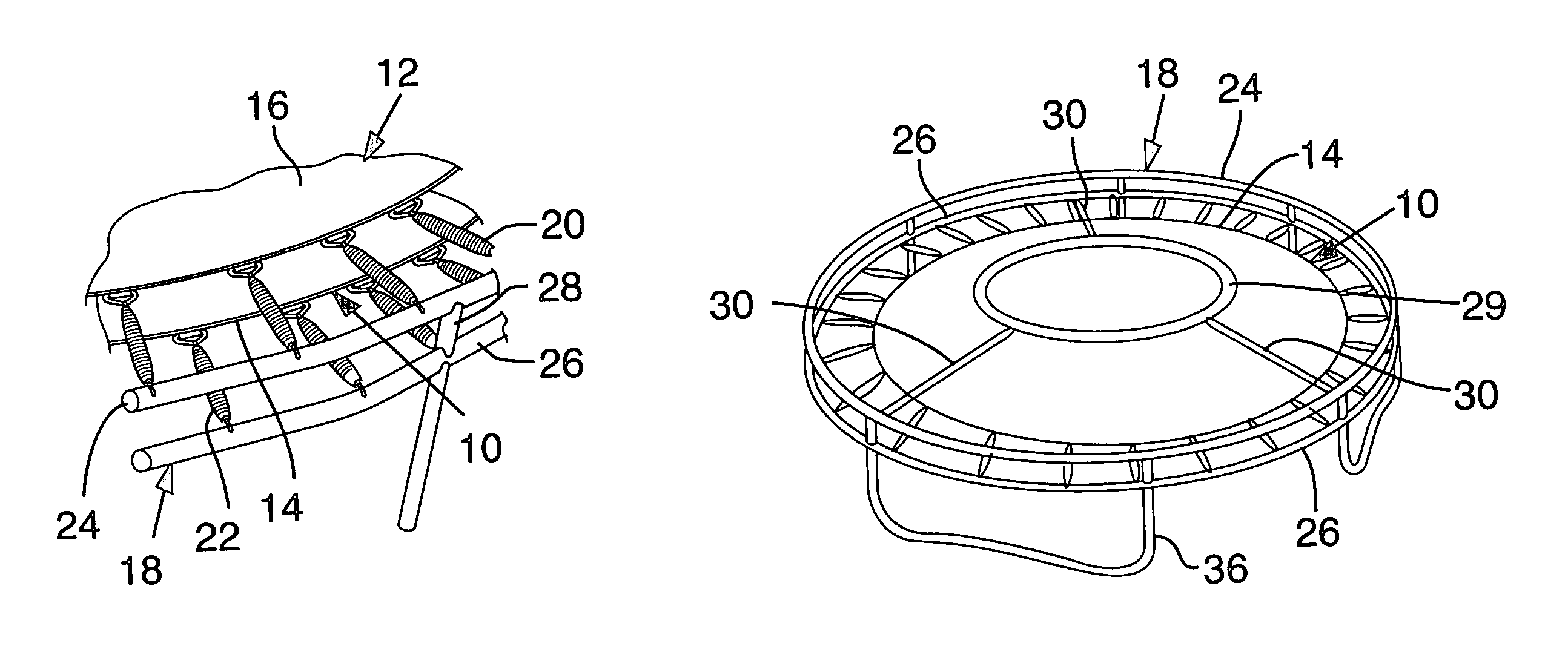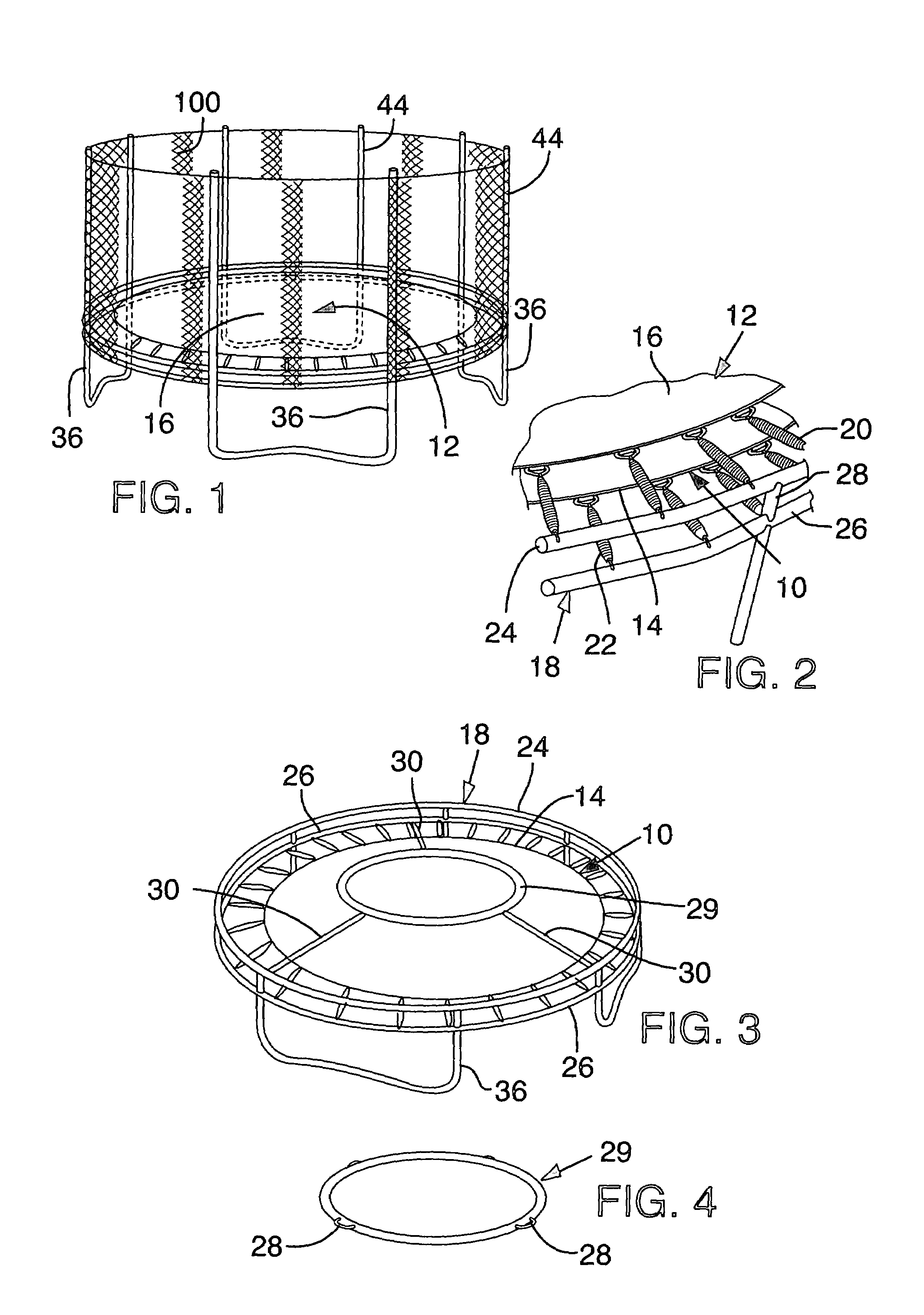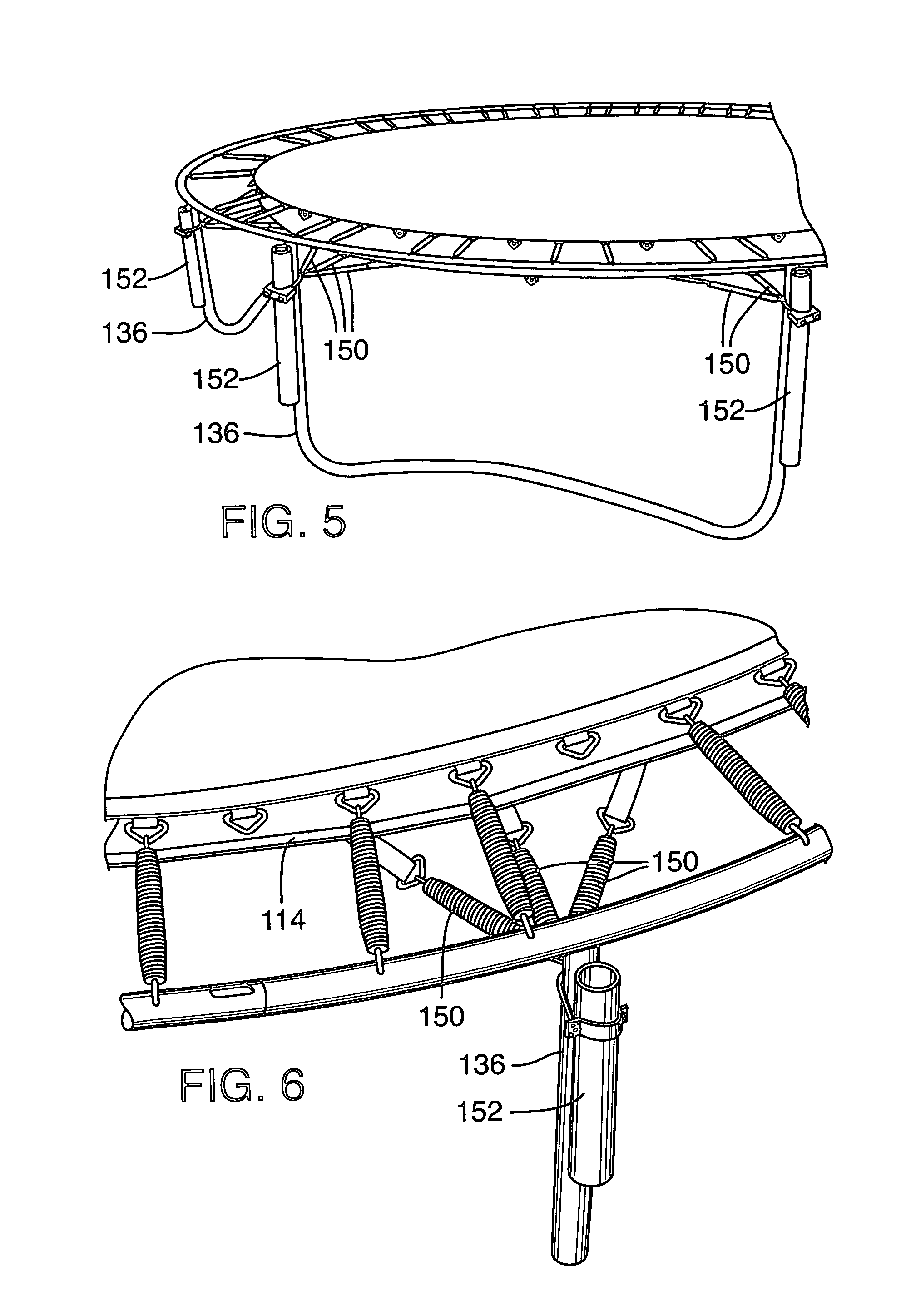Trampoline system
a trampoline and system technology, applied in the field of trampoline systems, can solve the problems of many on-bed trampoline injuries, many devices that do not directly address injuries, and many injuries on-bed trampoline injuries, so as to reduce the quantity and severity of on-bed injuries
- Summary
- Abstract
- Description
- Claims
- Application Information
AI Technical Summary
Benefits of technology
Problems solved by technology
Method used
Image
Examples
Embodiment Construction
[0015]The drawbacks of prior systems are overcome by the use of a trampoline system that employs one or more resilient members 10 located below the rebounding bed 12 of a trampoline. A resilient member 10 is located at a position selected so that the bed 12 depresses the resilient member 10 when the bed is sufficiently depressed by a person jumping on the bed.
[0016]Such a trampoline system is effective at reducing on-bed injuries that result from multiple jumpers and awkward landings. For instance, many injuries occur when multiple users are jumping asynchronously, a first jumper deflects the bed and loads springs with the energy from his fall and now a second jumper lands on the bed in an awkward position. At this point in time, the bed is highly tensioned (unforgiving) and has just begun moving rapidly upward, recycling the energy loaded into the springs by the first jumpers impact with the bed. In this case a bed / resilient member system can be used to significantly reduce the imp...
PUM
 Login to View More
Login to View More Abstract
Description
Claims
Application Information
 Login to View More
Login to View More - R&D
- Intellectual Property
- Life Sciences
- Materials
- Tech Scout
- Unparalleled Data Quality
- Higher Quality Content
- 60% Fewer Hallucinations
Browse by: Latest US Patents, China's latest patents, Technical Efficacy Thesaurus, Application Domain, Technology Topic, Popular Technical Reports.
© 2025 PatSnap. All rights reserved.Legal|Privacy policy|Modern Slavery Act Transparency Statement|Sitemap|About US| Contact US: help@patsnap.com



